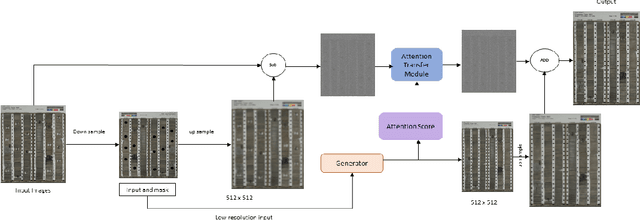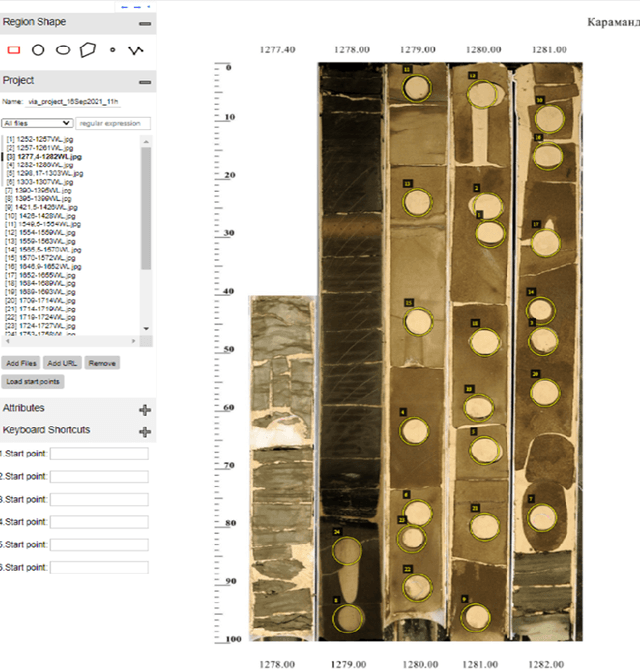Darkhan Kurmangaliyev
Application of machine learning methods to detect and classify Core images using GAN and texture recognition
Apr 21, 2022



Abstract:During exploration campaigns, oil companies rely heavily on drill core samples as they provide valuable geological information that helps them find important oil deposits. Traditional core logging techniques are laborious and subjective. Core imaging, a new technique in the oil industry, is used to supplement analysis by rapidly characterising large quantities of drill cores in a nondestructive and noninvasive manner. In this paper, we will present the problem of core detection and classification. The first problem is detecting the cores and segmenting the holes in images by using Faster RCNN and Mask RCNN models respectively. The second problem is filling the hole in the core image by applying the Generative adversarial network(GAN) technique and using Contextual Residual Aggregation(CRA) which creates high frequency residual for missing contents in images. And finally applying Texture recognition models for the classification of core images.
 Add to Chrome
Add to Chrome Add to Firefox
Add to Firefox Add to Edge
Add to Edge